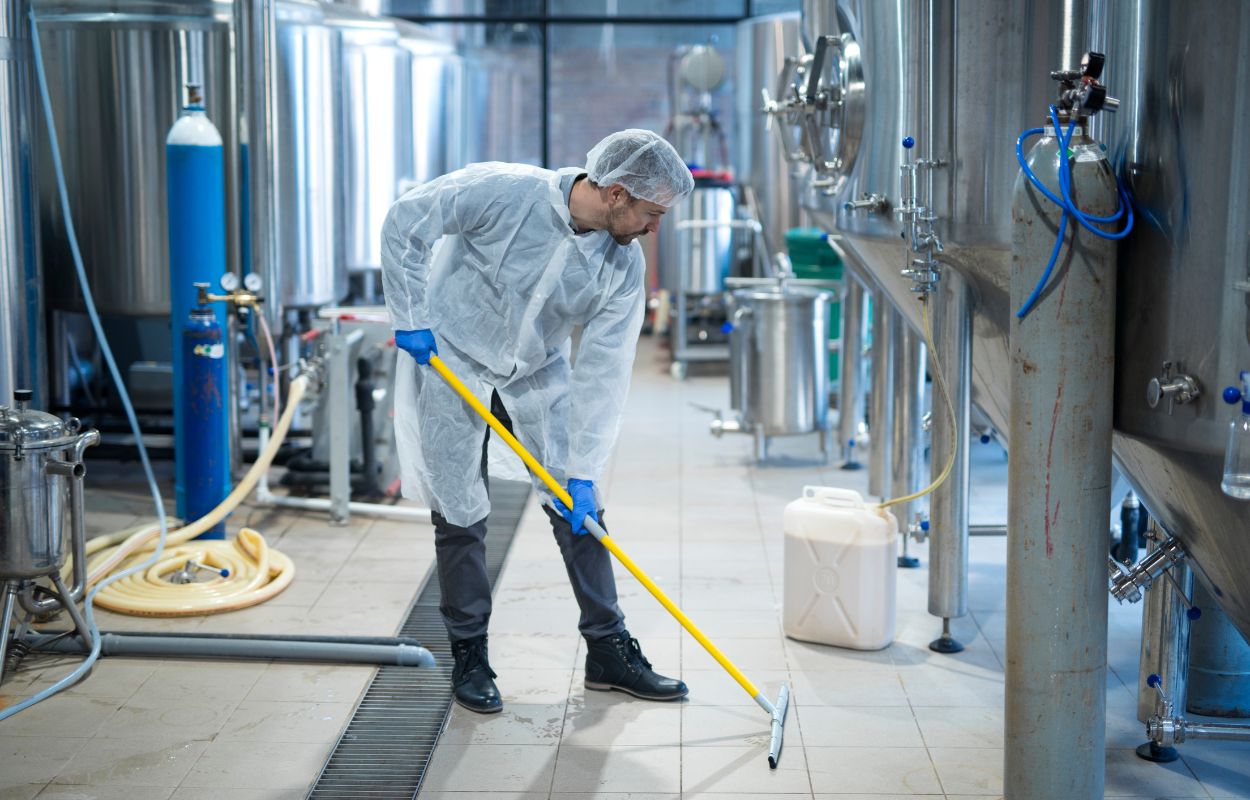OSHA Regulations for Temporary Workers

Case Summary: Plaintiff was assigned by a labor placement agency as a temporary worker with a Meat Packing Facility (MPF). Plaintiff testified that he had a history of learning disabilities and worked primarily as an unskilled or low-skilled worker for a variety of warehouse and large box retail operations. Plaintiff was initially placed at the MPF to work in the packing department, where he took individual boxes of meat off the conveyor belt and placed them into large boxes on a pallet ready for shipping.
After a week or so at that job, he was approached by the floor supervisor to take on a new task in their cleaning operation. The cleaning operations consisted of spraying empty racks, which held the meat while it was being cooked in the ovens. The task required the operator to use a fire hose type setup to spray high pressure water, mixed with an industrial cleaner and disinfectant to “clean” the racks.
The cleaner chemical used at the facility was a highly caustic solution that required identification and understanding of its safety risks, and therefore, proper training and personal protective equipment (PPE) to mitigate those risks. The MPF did not provide Plaintiff with the proper training, as required by the Occupational Safety and Health Administration (OSHA). Plaintiff sustained severe burns to his arms over the course of a few weeks performing the cleaning operation.
Expert Analysis: OSHA provides the legal requirements that all employers and, as in this case, co-employers, must ensure the safety of their workers, regardless of whether that worker is permanent, part-time, temporary, or otherwise defined. In this case, the MPF made the decision to redirect Plaintiff’s job from packing boxes along the production line to cleaning operations. There was no documented evidence that Plaintiff had any prior experience with such tasks, nor was there any testimony on behalf of the defendant that they provided him with training for the job. In fact, during testimony, the defense expert specifically stated that they did not have to provide training since Plaintiff was a temporary worker. That is not correct under OSHA regulations.
To protect the workers, the MPF should have conducted a job hazard analysis to fully identify all the risks of that operation and provided the proper training, communication, and PPE to mitigate the risks. The MPF also failed to provide a proper incident/injury management plan or accident investigation follow-up. Their lack of proper incident management most likely exacerbated Plaintiff’s injuries, as he had previously notified them of his arms burning and they failed to instruct him to immediately wash his arms and go directly to the hospital or see a doctor. Additionally, the MPF did not review the PPE provided to Plaintiff, nor did they check to see if he was wearing the PPE correctly.
Per OSHA regulations, the MPF failed to identify the hazards associated with their cleaning operation and therefore failed to provide the temporary worker with adequate and appropriate training, communication, and PPE, as well as proper and effective follow-up care upon notice of Plaintiff’s injuries.
Result: Case settled in favor of Plaintiff.
Carl R. Scatena, M.B.A.
Environmental, Health, and Safety Expert
View all articles by Carl R. Scatena, M.B.A.
